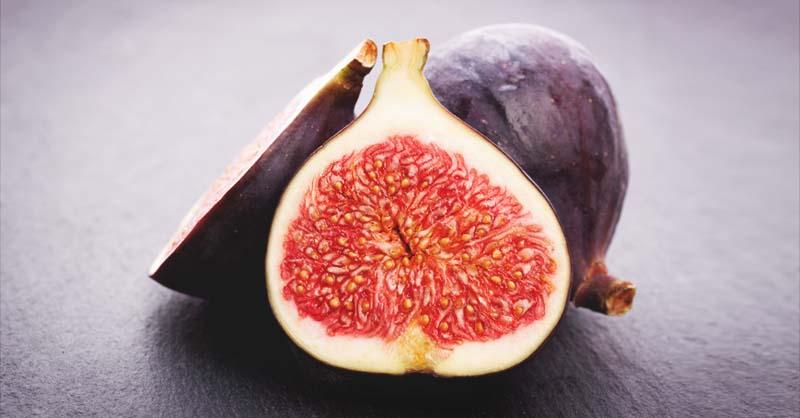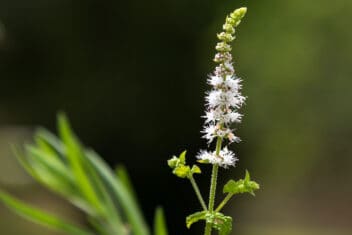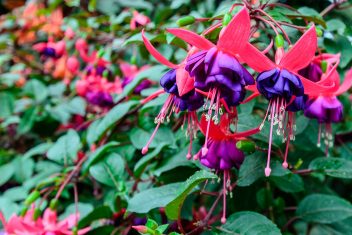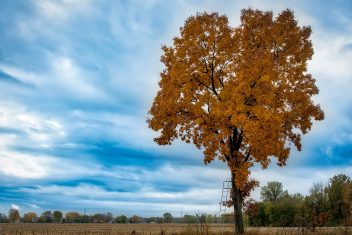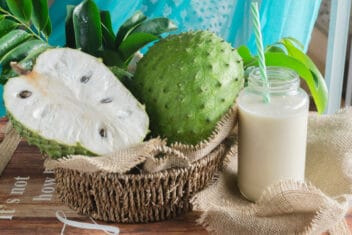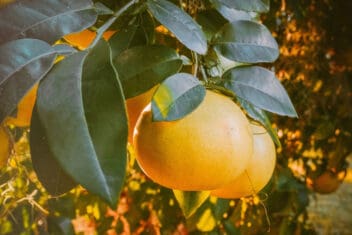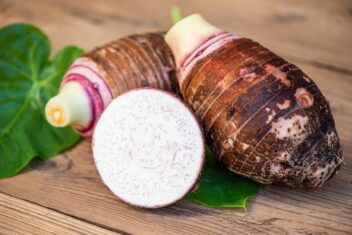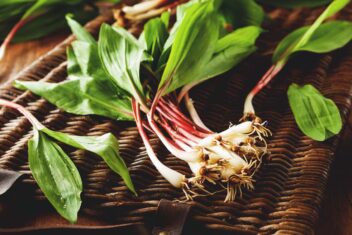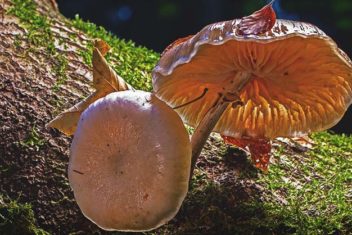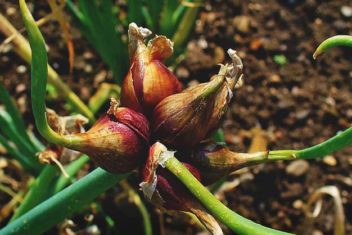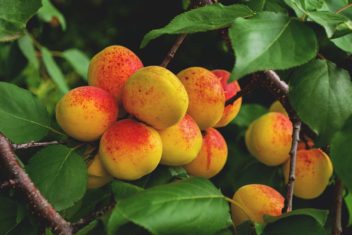Do you have a soft spot for figs, but hate the price tag at the supermarket?
Instead of spending an arm and a leg on buying figs, consider growing your own. Figs are easy to plant, they grow well in almost any planting zone, and they require a minimal amount of care.
If you’re interested in growing figs, you’ve come to the right place. I’m going to walk you through fig varieties, how to plant them, proper care techniques, help you troubleshoot potential problems they may develop, good and bad companion crops, and how to harvest and store them.
Here’s everything you should know to find success when growing figs:
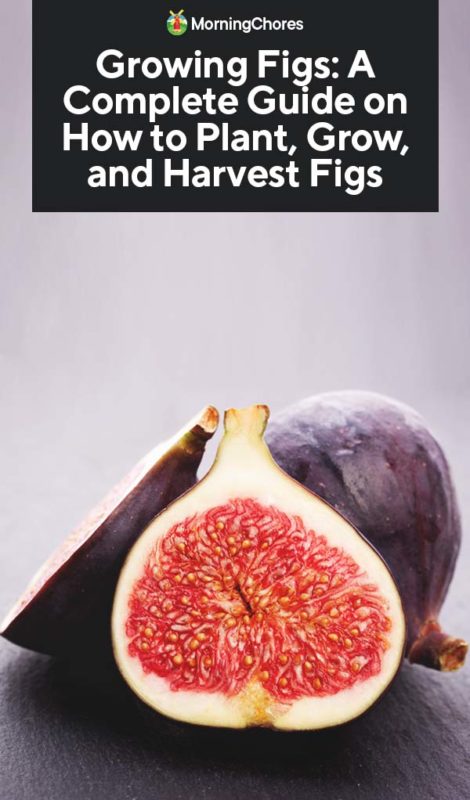
Delicious Fig Varieties
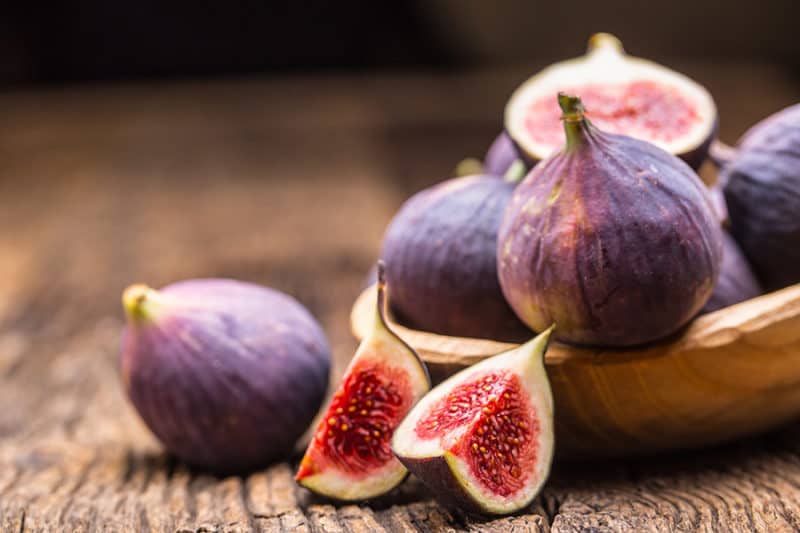
There are many different varieties of figs. Here are some of the best varieties to choose from:
Brown Turkey
Brown turkey figs have a brown and slightly purple skin. This type of fig has pink flesh, but it’s lighter than other varieties. It’s also less sweet than some of the other varieties.
Kadota
Kadota figs have green skin and pink flesh. If you don’t like overly sweet fruits, you’ll love this variety.
It’s known for being less sweet, but this makes it great for making homemade jams and jellies.
Adriatic
These figs come in either a light green or a light-yellow skin. They’re pink inside, like most other figs, but with a sweeter taste than others.
Calimyrna
This variety of fig is known for having a traditional green outside and a traditional pink flesh on the inside.
All figs have a nutty flavor, but this variety has an enhanced nuttiness to it. If you’d like a fig variety that pairs well with most cheeses, this would be it.
Black Mission
Black Mission figs are a common variety. They’re easy to spot because they have a rich purple color that almost makes them appear black.
This variety of fig is extremely sweet and is a great option for those who follow a whole foods diet but still love their sweets.
How to Plant Figs
Growing figs is a simple process. If you follow these few simple steps, your figs should be great producers for years to come:
Growing Zones
Figs do best when planted in USDA zone 7 or higher. If you live in an area that has prolonged single digits over the winter months, you can’t grow figs outdoors.
This doesn’t mean you must give up on figs all together. Instead, you can grow them in a container and move them indoors during the winter.
Be sure whether you plant in a container or outdoors, you plant while the tree is still dormant in early spring or late fall.
If you put the tree in its new home at the right time, it should do fine.
Planting in a Container
If you live in colder planting zones, figs won’t survive the winter outdoors. However, you can put them in a large container and find they should produce well.
When growing figs in a container, make sure you use a large pot or even a barrel cut in half. Figs have deep roots and need room to sprawl out.
Once you have the correct planter picked out, add well-draining soil to the container. Plant the fig tree in the soil as you would any other plant.
Make sure the roots are fully covered, and the soil is tucked snuggly around the base of the tree to prevent air from getting to the roots.
When this is done, place the container in full sun and leave it outdoors during the warmer seasons. As the cooler seasons move in, place the plant indoors where it still gets as much sun as possible.
Water the plant regularly. During the warmer months, be sure to fertilize the tree once per month. In the earliest stages of planting, water your fig tree one or more times per week.
Planting Outdoors
If you live in a warmer climate, plant the fig tree in a sunny location with well-draining soil.
There are no pH requirements for the soil because figs seem to be able to adapt and thrive in most soil settings.
Dig a hole deep enough for the roots to comfortably sit inside of it and cover with soil. Be sure to tuck the soil around the base of the tree to deter air from getting to the roots.
Keep in mind, fig trees have deep roots. Be sure to consider this when planting near structures or other trees.
It’s recommended to put at least 20 feet of space between fig trees and other structures or plants.
How to Care for Figs
Figs are the type of tree you toss in the ground or a pot, provide basic care, and they love you. They’ll produce quality fruit and not be picky about it.
Which is why I love my fig trees. If you’re looking for a tree that will give you something without expecting much in return, figs are it.
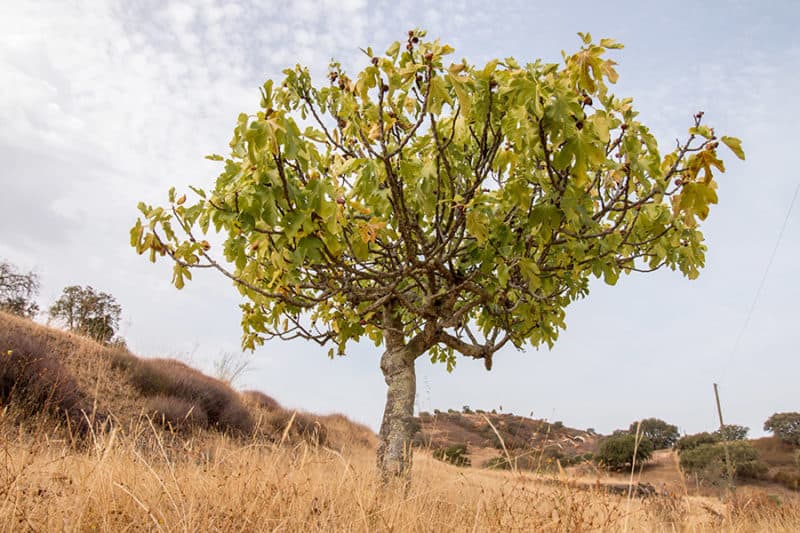
Follow these few steps for caring for them, and you should have happy and productive fig trees:
Water
Fig trees should be watered regularly. If the plant is outdoors, rainwater should provide the needs for the plant apart from dry seasons.
When you first plant your fig tree, be sure to water one or more times per week. It’s essential to make sure the fig tree has what it needs to establish strong roots.
Fertilizer
If your fig trees are growing in a container garden, they should be fertilized once per month during the warmer seasons.
If your fig trees are planted outdoors in the ground, you shouldn’t have to fertilize them at all. If they’re failing to thrive you can try doing small nitrogen feedings, but they should get what they need from the soil around them.
Mulch
Be sure to apply mulch around the base of your fig tree whether it’s in the ground or a container. This will help retain moisture between watering sessions.
Plus, it will also help suppress weeds. You don’t want weeds around your fig trees because it will take nutrients from the tree.
Pruning
Many plants require heavy pruning each year to produce a quality harvest the next. Figs aren’t this type of plant.
Instead, they only need light pruning. If you’ll remove the dead, damaged, or diseased portions of the tree each winter, they’ll continue to grow and produce.
Thin
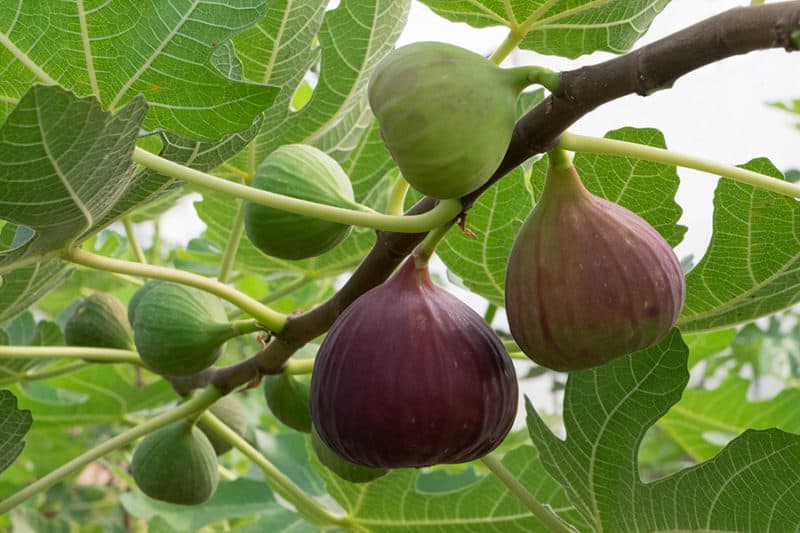
Thinning fruit is an easy process that can help fruit trees to produce a consistent harvest and large, quality fruit each year.
By removing some of the fruit from your fig tree, it allows the remaining fruits to get more of the tree’s energy. Therefore, they become more substantial.
Growing Tip for Figs
If you’re growing figs with the goal of a large harvest, try constricting the roots of the tree. This happens on its own in a container because the tree only has a set amount of room to spread out.
However, if you’re growing them in the ground, try planting the tree in a well-draining pot. The roots will grow under the pot, but will also come out of the top of the pot.
Every other year stick a sharp knife into the ground and see if any roots have grown out of the top of the pot. If they have, cut the roots away from the tree.
By constricting the roots, it encourages the tree to produce more fruit. If you do this, it’s vital to thin the fruit from your trees because if the tree overproduces, it could develop the cycle of biennial bearing to catch up on resources.
Problems and Solutions for Growing Figs
Fig trees have only a few threats you should be aware of. Here’s what you must know to protect and care for your fig trees:
Nematodes
Root-knot nematodes are tiny worms that lay their eggs inside the roots of your fig tree. This causes knots to grow on the roots.
These knots will create a barrier for your plants, which will stop the flow of water and nutrients to the plant.
Nematodes are nearly impossible to see with the naked eye, and many of their symptoms are similar to other diseases.
If you suspect you have a nematode issue, take some of your soil to be tested. There are no chemicals available that treat root-knot nematodes.
Instead, you can try solarization, but prevention is your best option. By making sure your fig trees have the right amount of water and nutrients, they’ll become stronger.
Stronger plants have a greater chance at surviving attacks from the pests that live around them.
Birds
Birds love your figs as much as you do. They can become pesky and get more of your harvest than you will if you don’t protect it.
Therefore, if birds become an issue, apply netting over the tree. This allows the fruit to grow undisturbed.
Rust
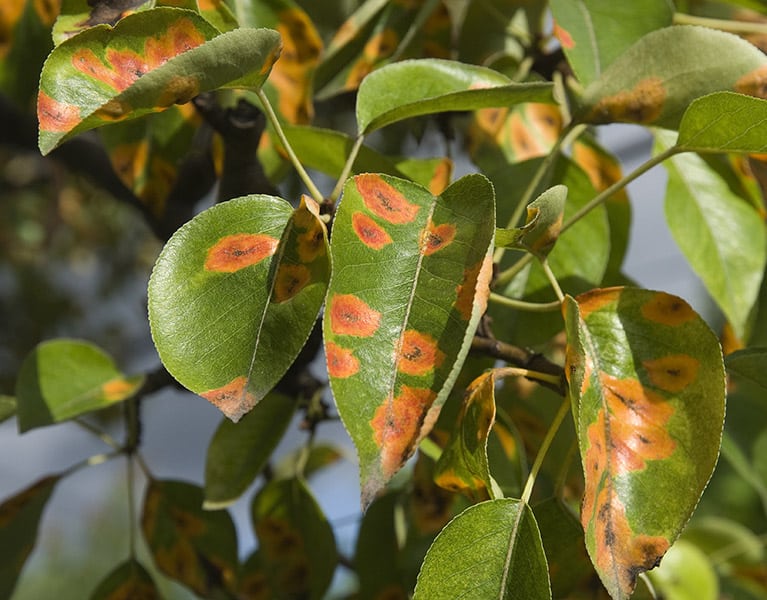
Rust on fig trees takes place on the underside of the leaves, to begin with. It will travel to the top of the leaves from there.
It looks like speckled spots of rust and is caused by a fungus that forms in a moist climate. Once your tree has rust, it’s difficult to remove it. Prevention is the key.
Make sure you prune your fig trees to create more airflow between the leaves and water only at the base of the tree.
This will avoid unnecessary moisture hitting the leaves of the fig tree and leaving room for the fungus to grow.
Companion Planting with Figs
These are the plants you’ll want near your fig trees:
- Strawberries
- Rhododendron
- Marigolds
There are a few plants that shouldn’t be planted near figs. The following plants will attract more root-knot nematodes to the area. Avoid planting these crops near your fig trees:
How to Harvest and Store Your Figs
Figs are easy-going until harvest time. They can become a finicky crop when it comes to proper harvesting times, techniques, and storage. Make sure to follow these steps to ensure you have a harvest to enjoy:
Harvest at the Right Time
Figs won’t ripen once they’ve been removed from the tree. Therefore, it’s vital to harvest them at the right time.
If they aren’t ripe, they won’t have a good flavor. If you allow them to become too ripe, they turn mushy. You’ll know they’re ready for harvest when the neck of the fruit begins to wilt, and the fruit is sagging from the tree.
How to Harvest the Fruit
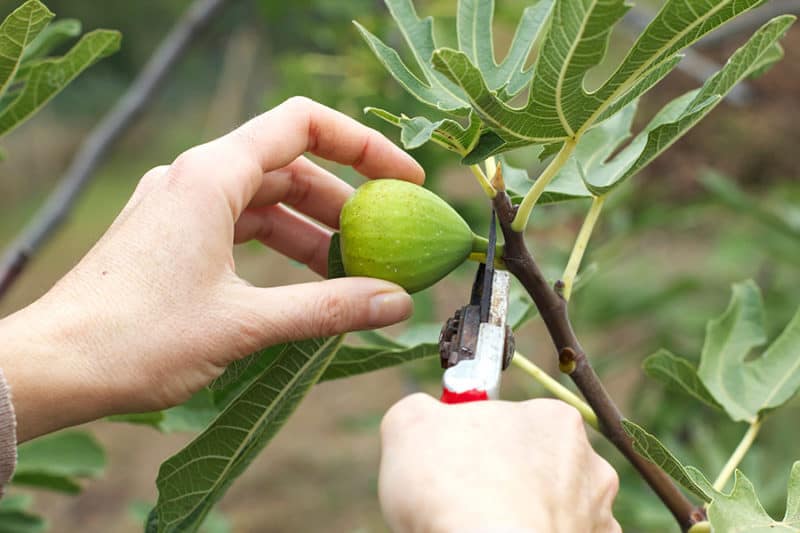
Figs are easy to bruise and damage during the harvesting process. Gently pull them away from the tree and cut the fruit off using a pair of scissors.
Be sure you leave a small part of the stem attached. This helps the fig remain fresh during storage.
Protect Yourself
When harvesting figs, be sure to wear gloves and something protective over your arms, like a jacket or long-sleeved shirt.
Figs are filled with sap, which can irritate your skin if it’s exposed for long periods of time.
Store Properly
Figs aren’t a forgiving fruit once they’ve been harvested. They should be stored in the coolest part of your fridge and away from other fresh produce because they’ll cause them to rot.
However, figs are great for long-term storage if they’ve been preserved. You can freeze them, dehydrate them, or can them for later use.
Now You’re Ready to Grow Figs
Now you’re in the loop when it comes to raising your own figs. It’s an easy process, they can be grown anywhere (even if you don’t have much space), and it can save you a bundle at the grocery store.
Hopefully, you’ll have a wonderful time gardening and use this as motivation to raise even more of your own food along the way.

